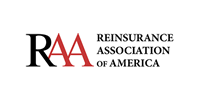Holborn is fresh off the RAA Cat Conference, hosted in Orlando, Florida last week. Among topics discussed were:
- InsureTech: The surge of investment began after the 2008 financial crisis and has centered on the personal lines segment, which is more commoditized and less nuanced than commercial. The timing of the surge coincides with the expansion in global money supply over the last decade, and also a lower interest rate environment. With lower interest rates, insurers cannot rely on investment income to generate necessary returns on capital, and therefore have a need to become more efficient and find different avenues for growth. As such, the current thinking is that InsureTech companies will not supplant established industry leaders but, instead, will be purchased by them. More to watch in this space, as the ultimate success of InsureTech in changing the industry may rely upon the industry’s ability to pull-off successful acquisitions – which can be tricky.
- Hurricane: 2017 Atlantic Basin Hurricane season ranked high on the ACE (Accumulated Cyclonic Energy) Index, and its active nature can be largely attributed to fertile atmospheric conditions/instability (for wave creation and subsequent correlation with centers of air circulation) in Western Africa. Some noteworthy items:
- 2017 marked the first time on record (1851 to present) that two Category 4 storms made landfall in the continental U.S.
- Harvey, breaking all records on the flooding front, actually had higher sustained winds at landfall than Irma.
- Irma’s (re)insured loss was influenced by LAE inflation caused by short supply of independent adjusters. AOB for water mitigation claims could result in ongoing litigation and claims creep for years to come.
- Uncertainty in Maria’s early loss estimates stemmed from the commercial and industrial segments (including business interruption related to extensive power grid damage); residential property was relatively well understood (and modeled) from the outset.
- Severe Convective Storm: 2017 U.S. SCS (re)insured loss is currently estimated at $18.6Bn – marking a continued increase in both frequency and severity of large ($1Bn+) SCS events. Suburban sprawl leading to structural development on previously undeveloped land is also a major contributing factor. There is simply an increased likelihood of damage due to the amplifying confluence of climatic and building trends.
- Earthquake: Model vendors’ ground-up views are fairly consistent in California but, conversely, are somewhat divergent in New Madrid. This is unsurprising as the actual data points (observations) for CA are numerous whereas those for New Madrid are few and far between (for events of meaningful magnitude). A key consideration in New Madrid is “clustering” as informed by the three event sequence in late 1811 to early 1812. Assumptions here have a major impact in the tail (500yr+) of the annual loss distribution, which is the key determinant of modeled AAL.
- Flood: FEMA is ambitiously targeting a four-fold increase in overall mitigation and a doubling of their coverage provided by 2023. Currently they have roughly 5Mn policies representing $3.6Bn of annual written premium. Approximately 12% of homeowners have flood insurance in the U.S, with FEMA insuring the vast majority. FEMA is embracing a collaborative approach with the private sector to maximize this outcome and improve overall resiliency (close the protection gap). Part of this collaboration is securing reinsurance.
- Wildfire: The California Wildfires have caused an estimated $10Bn of (re)insurance industry loss. Approximately 80% of the loss is from the Northern California fires, in October 2017, which burned 228,000 acres and destroyed 8,400 structures. The remaining 20% of loss is from the Southern California fires in December 2017. More acreage actually burned in in these fires (308,000), but significantly lower structural damage was inflicted (1,362 properties destroyed, and another 460 damaged). The prior nine months, beginning in March 2017, was the driest in over 100 years, which had both a causative and exacerbating effect. Interestingly, state regulators have deemed the wildfires as the proximate cause of the mudslides in this same area that ensued following January’s torrential rains. Debate remains as to whether the wildfire’s were actually a significant causative agent – i.e., it is possible the mudslides would have occurred anyway, given the magnitude of rain. But regardless of who is “right” in this debate, standard property insurance policies are responding as a result.
A full overview and insights from the conference will be available shortly.

